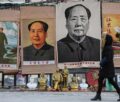Medical devices in India witness churning, Price war escalates

By NEERAJ BAJPAI
“We are moving into a bold era, defined by advanced medical technologies and artificial intelligence. But healthcare will always remain a human business”. For Dominic Asquith, British High Commissioner to India that is the crux of current situation, but a razor sharp competitive business in Medical devices across the world has a different narrative because of market compulsions Vis-a Vis human business.
India’s strong position on heart stents’ price regime triggered debate and the price war snowballed into tough positions and international players gaped with a bewilderment.
Many institutions and professional bodies flew into action and debated price structures while the country’s federal government unveiled its world’s largest health coverage scheme for millions, virtually creating a colossal potential in the health sector. If the Government extends healthcare services to its 1.25 billion population as part of India’s Universal Health Coverage (UHC) agenda, it will be a challenge to devise ways to reduce catastrophic Out Of Pocket (OOP) expenditure on healthcare and ensure affordable access to essential health care for the entire population with the limited resource envelope.
Amid ongoing trading tussle between US and CHINA, many apprehend ar that ripple effect will also percolate down in India as the latter is going ahead with its price regimes and its moves to bring down stent and knee implants devices had raised many eyebrows.
A section of media has reported that AdvaMed (Advanced Medical Technology Association) in its briefing memo for US commerce secretary and US trade representative last year had conveyed that “Made in India “scheme has been used by parts if the Indian government to justify protectionist measures such as import tariff hikes and preferential market access policies.
The US Economist newspaper,recently carried a write up which quoted china Digital times , a California based website that Chinese media had been advised to play down China’s global dominance in various technological sectors ,known as “Made in China 2025’”.Such developments indicate that should India also dial down the hype on “Made in India “.
The 2014 World Bank Report estimated the OOP spending on healthcare in India to be as high as 89%. India is the only country out of the major world economies where out-of-pocket expenses are increasing, despite a concurrent increase in public spending. This effectively means that more people are availing private healthcare services due to rising incomes, or are forced to spend due to inadequate public expenditure.
Official sources say big schemes can be ensured with the help of Health Technology Assessment (HTA), which is a widely used methodology internationally for optimization of resource allocation in health. HTA is a method of evidence synthesis that considers aspects pertaining to clinical effectiveness, cost- effectiveness, social, ethical and legal implications of the use of “health technology” for healthcare intervention
The Indian healthcare industry was valued at over USD 100 billion in 2016 and is expected to reach more than USD 175 billion by 2020, resulting in a CAGR (Compound annual growth rate) of 20%. The medical device industry is valued at USD 6 billion. The medical device industry was accorded the status of an independent industry in 2014 the medical device sector today is clearly small and indicates low penetration in the country.“The path to realizing healthcare goals is complex, and various fundamental issues and challenges need to be addressed and solved holistically. Long-term plans need periodic policy and regulatory interventions to ensure fair conduct within the industry while providing the support needed for pro?table and sustainable growth. These activities will enable the medical device industry to accelerate rapidly and play a key role in making India healthier and stronger.“
Mr Guljit Singh, Executive Chairman of SKP BUSINESS and Consulting Vice President Global Strategy and Analysis AdvaMed (Advanced Medical Technology Association) Abby Pratt tatt said in their foreword of the study. AdvaMED had partnered last year with SKP to publish the study entitled – Medical Device Industry in India –the evolving landscape, opportunities and challenges.
The study also examined various policies and regulations impacting the industry and attempts to make recommendations on the way forward from the perspective of different take holders.
The Study made a slew of recommendations like cap trade Margins and not Price to the dealers, should be capped after detailed evaluation of each Medical Device segment and the role of trade. Trade margins should be ?xed deferentially for different categories of devices, based on service requirements and role of distributors.
It says allow the dealers to compete with each other and provide a fair price to the hospitals based on the terms and conditions of services and payments. There is a need to work towards bundled payment models as used in many other countries to better align incentives for hospitals and their business models. Increase government healthcare spending as a percentage of GDP. India lags behind the other BRICS in this regard.
Adequate utilization of government infrastructure to reduce the cost to Private players – PPP model could be an attractive alternative to explore. Specify certain quantities/proportions of supply of different stents at lower prices to speci?ed government agencies for use with underprivileged sections. It advocated to empower the Medical Technology Assessment Board (MTAB) to Evaluate the model of tiered pricing as observed in the French healthcare ecosystem, wherein the NPPA cap the generic products and leave the latest generation products with incremental value out of the ‘essentiality purview’.
The incremental value could be on account of e?cacy, material used, ease of delivery and shortened recovery time. Various combinations are possible here such as: an increase in the number of tiers, allowing new introductions to be free of price Intervention for a certain number of years. Identify priority medical devices and procedures that demonstrates the greatest need stemming from disease burden. MTAB along with other regulators for medical devices should ensure that there are minimum
Quality parameters—in terms of safety, clinical e?cacy, and cost-effectiveness—for medical devices that get used in the public and private health system, such that long-term costs are lowered over a patient’s lifespan, with need for fewer hospital readmissions, lowered need for medication, and overall better health outcomes.
The report said factors such as changing demographics, rising life expectancy, growing incomes and public awareness have contributed to a higher demand for medical care. A more focused approach from the government, with increased public expenditure on health, greater utilization of technology, vibrant private sector participation, and continued innovation can transform the sector and move India closer to its goal of providing quality universal healthcare.
Some of the key issues faced by the Indian healthcare industry are evident: With India’s disease burden shifting from acute to chronic diseases, large numbers of the population continue to not have access to basic healthcare services. Public health infrastructures poorly equipped to deal with this shift toward NCDs.
The report said it is essential that healthcare professionals are appropriately trained and adequate in numbers. However, the Indian healthcare system continues to lag behind both developed and other developing countries in terms awareness, availability, affordability, and access to quality health services.
While the government and value chain participants are undertaking several steps to address these issues, they have been executed in silos. Medical service providers are not only inadequate but are also not evenly distributed across rural and urban areas.
This shortfall occurs despite an increase in the number of medical colleges from 23 in 1947 to 398 in2014. The quality and availability of healthcare deteriorates as one moves away from large urban centers to lower-tier towns and rural area.The Indian medical device industry, the report found, is highly fragmented. Currently, this sectors dominated by MNCs with 70–75% of the demand being met through imports.
Approximately 30% of the domestically manufactured devices are exported, in which the consumables and disposables segment has the largest share.
On a mix of technologies such as engineering, electronics, material sciences and information technology. Innovation, capital and technology drive the industry. However, India has not been able to bridge the gap between investments, skilled resources and innovation to fully capitalize on these opportunities. Numerous factors underlie the prevalence of higher imports in the country.
Some of these are: There is no clear comparative cost advantage in comparison to other emerging markets and policy issues like inverted duty structured not help in creating a positive environment. Lack of favorable policy and regulatory framework, the report, compiled last year said.
On Segments, the study said, hearing aids and pacemakers form major part of patient aid segment and constitute 70% f e segment collectively. Most of the products are sourced from Ireland, USA, Australia, Singapore, China, and South Korea.
The medical disposable and consumables sector consists of products such as plastic syringes, blood bags and many others. This segments dominated by domestic players in India due to its low technology requirements.
Needles and syringes constitute majority of the sales. However, wound management products and medical apparels are the fastest growing products in this segment. The Indian implants segment has witnessed an encouraging growth rate of CAGR25%.
With a healthy mix of both domestic companies and MNCs, this segment has witnessed intense competition between players due to strong pricing pressure. The domestic players have realized the market potential which demands customization and differentiated product quality. The equipment and instruments section is the largest segment of the medical device industry constituting nearly 54% of the segment and is dependent on imports.
MRI machines, CT scanners, ultrasound machines, dental drills, dental chairs, dental x-ray machines. Are some of the key products of this segment? It is dominated by MNCs like GE Healthcare, Philips Healthcare, Schiller Healthcare, Danaher Corporation, and Roche
Drug-eluting stents and bare metal stents form a major part of the stents segment and constitute more than 70% of the segment collectively. Most products are sourced from the USA and Europe.
While domestic companies are manufacturing cost competitive products, they still face competition from international players on account of quality. Diagnostics segment is growing due to advanced technology being increasingly applied in medical procedures.The report had said government initiatives control regulation and the new Public Procurement Policy .the preferential Market Access do not fully re?ect this and has alarmed many industry participants.
A clear long term vision and roadmap for the industry and predictability of policy would excite the industry. The government needs to provide policy support for both the supply and demand side of the medical device industry to successfully accelerate growth. Industry and government need to work together to improve awareness, access, has made rapid progress in the last decade, but Signi?cantly lags behind other nations in availability and quality of equitable medical care and services for citizens.
This in turn presents an enormous opportunity given the large population, growing economic prosperity, and the disease burden. Major issues such as availability of adequate infrastructure, trained human resources, geographic spread, rapidly changing disease burden, and high/often catastrophic out of pocket expenditures are challenges that the government is keen to address, the report said.
The Indian government is committed to raise public expenditure on health to 2.5% of the GDP. Public and private sectors need to play equally important but different roles in bringing rapid change to the healthcare scenario in the coming decade.
Around opening up FDI and infrastructure development are welcome initiatives that will enhance the ecosystem for investment. The Indian medical device industry appreciates government’s efforts to remove bureaucratic hurdles and improve the ease of doing business, but believes that additional steps can be taken to strengthen its approach.
The study identified challenges and said growth in the healthcare industry has been attractive. However, much more needs to be done. Despite the Advent of private players and better government spending, most Indians can only afford and/or have access to basic healthcare. Hence, the path to universal healthcare coverage is challenging.
Some of the obstacles faced are —Real estate prices and high capital costs limit the growth of delivery infrastructure. Insu?cient attention by policymakers and a complex tax regime are also responsible for the sector’s underdevelopment. The lack of a comprehensive policy and focus to develop the healthcare eco-system. Low Penetration – The per capital medical device spending of USD 3,compared to USD 7 in China and USD 42 in Russia is signi?cantly low. The limited attractiveness of India as a destination for medical devices, the study said, is due to uncertain regulations and pricing environment, unavailability of skilled resources, and ease of doing business compared to other comparable destinations in Asia. It said the Indian healthcare system is inadequate, ine?cient, and evenly distributed.69% of the Indian population lives in rural areas, while 73% of quali?ed consulting doctors reside in urban areas.
Eight percent of quali?ed doctors are in rural areas, and the remaining 19% are in semi-rural areas.it highlighted that Lack of innovation and Customization resulting in fewer options available to the patients. Inadequate regulatory systems: Non-alignment with global Standards and the lack of quality product testing infrastructure are issues that hinder sectoral progress. The Indian Medical Device sector is undergoing signi?cant changes for the better and will continue to do so in the foreseeable future.
From both the regulatory and domestic innovations perspective, recent changes in this sector, especially with the government’s focus on the Make in India campaign, will cause a shift in the industry’s structure, conduct, and performance. Manufacturing will get more organized and international companies will assess plans to manufacture in India in selected product segments due to harmonized global standards. The increase in testing labs, clinical trials and certi?cations will increase R&D in India and eventually more customized products for the Indian market will emerge.
It called for a conducive environment for technological Companies who demonstrate quality innovations standards together with cost sciences to thrive ;Focus on manufacturing and research in More International companies to manufacture in India and expand their presence across segments; Focus on technology and innovation to drive down cost and improve margins with better and differentiated products Patients to bene?t from competitive costs and better quality products from both domestic and international companies
The report highlighted that International companies will look at domestic innovation opportunities; domestic companies should focus on raising quality standards and technological upgradation ;International and domestic companies to customize products for Indian needs International and domestic companies to collaborate with each other through joint ventures or associations.
Another study early this year -Medical devices in India- an agenda to effective healthcare delivery” said to attract world’s top medtech players to establish their research and development (R&D) operations in the country and to establish a firm footing in the global market, the Government needs to adopt a robust policy and regulatory framework. India can replicate some of the models being adopted by other nations that have succeeded in attracting leading medical players. The contents of this report are based on a study commissioned by AdvaMed and conducted by IQVIA on behalf of ADVAMed.
It said the Government can provide financial incentives in form of extended tax holidays or weighted tax reduction for R&D investments; Boost local demand for medical devices by stepping up public healthcare spending which in-turn could catalyse investments in this sector Further, Government should focus on creating an enabling regulatory landscape by creating a separate legislation system for medical devices.
The report said While, Medical Devices Rules, 2017 is a welcome step towards regulating the medical devices sector, the setting up separate notified body and distinct legislation system for devices with a focus on the following could further boost growth of the industry like Grant product approvals; Instituting quality standards; Setting up monitoring mechanisms for devices; Expedite patent approval process for medical devices.
Medical devices form a more than $200-billion global industry, which develops and manufactures essential healthcare equipment. The Indian industry is currently valued at US$ 4.4 billion With about 700 medical device makers, India’s medical device market is currently the fourth-largest in Asia (after Japan, China and South Korea) and ranks among the world’s top 20.
Imports constitute a substantial part of the medical device market in India. An estimated 80% of India’s demand for medical devices is currently met by imports, nearly 30% of which are supplied by the United States. Imported medical devices are often those that are critical, innovative and high-risk in nature – either life-saving or life-enabling – and therefore undergo rigorous testing. These complex, innovative devices are designed to address the growing expectations of India’s population in the country’s rapidly evolving healthcare system, this report said.
The medical device industry has been very encouraged by the Prime Minister’s recognition of the critical role of medical devices in addressing India’s healthcare challenges. The AdvaMED website says In general, we have a received a strong message from the government that they are interested in promoting the medical devices sector and creating an environment that fosters innovation. This is great news not only for manufacturers of medical devices but more importantly for patients who desperately need access to high quality yet affordable lifesaving and life enhancing medical technologies.
The PM’s call to medical device manufacturers is a welcome recognition of this separate and important part of the healthcare system. Several of AdvaMed’s member companies have already established manufacturing units in India, and India is being increasingly viewed as an R&D base.
The website says the medical device industry in India has grappled with challenges for several years around recognition and regulation. While the Global Medical Device Nomenclature (GMDN) lists more than 14,000 different product types, the current regime only regulates a relatively modest portion of these products. Moreover, these devices/products are regulated as “drugs” under the Drugs and Cosmetics Act of 1940. This is problematic because medical devices are very different from drugs in terms of diversity, product development, patent structures, types of failures, scientific disciplines involved in assessing performance/efficacy.
In addition to the arbitrary application of the rules for drugs to medical devices, which hinders the development, quality of and access to medical devices, there is also a lack of predictability in the regulatory system. The industry is also concerned about the lack of standardization in line with global best practices.
-
Book Shelf
-
 Book Review
DESTINY OF A DYSFUNCTIONAL NUCLEAR STATE
Book Review
DESTINY OF A DYSFUNCTIONAL NUCLEAR STATE
- Book ReviewChina FO Presser Where is the fountainhead of jihad?
- Book ReviewNews Pak Syndrome bedevils Indo-Bangla ties
- Book Review Understanding Vedic Equality….: Book Review
- Book Review Buddhism Made Easy: Book Review
- Book ReviewNews Elegant Summary Of Krishnamurti’s teachings
- Book Review Review: Perspectives: The Timeless Way of Wisdom
- Book ReviewNews Rituals too a world of Rhythm
- Book Review Marx After Marxism
- Book Review John Updike’s Terrorist – a review
-
-
Recent Top Post
-
 NewsTop Story
What Would “Total Victory” Mean in Gaza?
NewsTop Story
What Would “Total Victory” Mean in Gaza?
-
 CommentariesTop Story
The Occupation of Territory in War
CommentariesTop Story
The Occupation of Territory in War
-
 CommentariesTop Story
Pakistan: Infighting in ruling elite intensifies following shock election result
CommentariesTop Story
Pakistan: Infighting in ruling elite intensifies following shock election result
-
 CommentariesTop Story
Proforma Polls in Pakistan Today
CommentariesTop Story
Proforma Polls in Pakistan Today
-
 CommentariesTop Story
Global South Dithering Away from BRI
CommentariesTop Story
Global South Dithering Away from BRI
-
 News
Meherabad beckons….
News
Meherabad beckons….
-
 CommentariesTop Story
Hong Kong court liquidates failed Chinese property giant
CommentariesTop Story
Hong Kong court liquidates failed Chinese property giant
-
 CommentariesTop Story
China’s stock market fall sounds alarm bells
CommentariesTop Story
China’s stock market fall sounds alarm bells
-
 Commentaries
Middle East: Opportunity for the US
Commentaries
Middle East: Opportunity for the US
-
 Commentaries
India – Maldives Relations Nosedive
Commentaries
India – Maldives Relations Nosedive
-
AdSense code



















